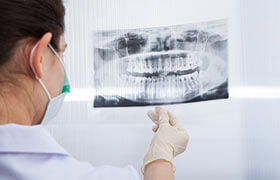What is a root canal?
A root canal is a dental treatment in Walkerston for patients who have a seriously decayed or infected tooth. Root canals often repair and save teeth that would otherwise be lost. A root canal procedure involves removing the nerve and pulp inside a tooth. It is then cleaned and sealed, eliminating infection and pain. Leaving an infected or badly decaying tooth without a root canal treatment can lead to further infection, painful abscesses and tooth loss.
 Why is it called a root canal?
Why is it called a root canal?
Root canal is the name of the natural pulp chamber in the middle of a tooth. This pulp chamber is a soft area containing the tooth’s nerve. Removing this pulp and the nerve of your tooth may sound like a damaging dental treatment in Walkerston. However, these parts are not vital to your tooth’s health. The function of the pulp and nerve is solely sensory, it tells you when your tooth touches something is hot or cold. If you have a root canal treatment you will not feel hot or cold in that tooth any more.
How will I know that I need a root canal?
If your nerve tissue or the pulp of your tooth has become infected it is likely that you will need to have a root canal dental treatment in Walkerston. As root canal treatments are used to treat infected or very damaged teeth, there are plenty of warning signs. Patients will commonly experience all or some of the following symptoms:
- Toothache
- Sensitivity
- Pain or tenderness when eating
- Swelling in the mouth, face, neck, or head
- An abscess which may drain into your gums or cheek.
These symptoms do not only occur in decaying teeth. Infection can occur in the tooth pulp for other reasons, such as:
- Trauma to your tooth or your jaw
- Deep fillings or old fillings
- Very bad gum disease
- Bone loss around the tip of the tooth root.
At Walkerston Dental in Walkerston GP Super Clinic Queensland, we use a surgical microscope for root canal treatments. This helps us to remove all infected tissue inside your tooth. We numb your tooth and the procedure is much like getting a filling.





